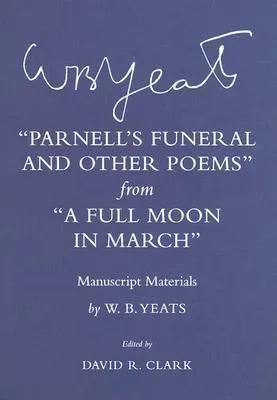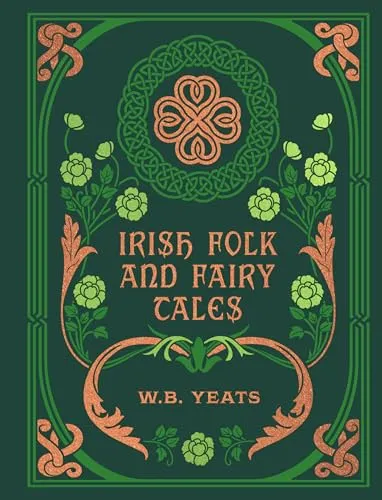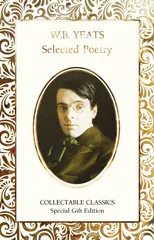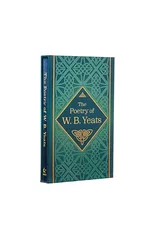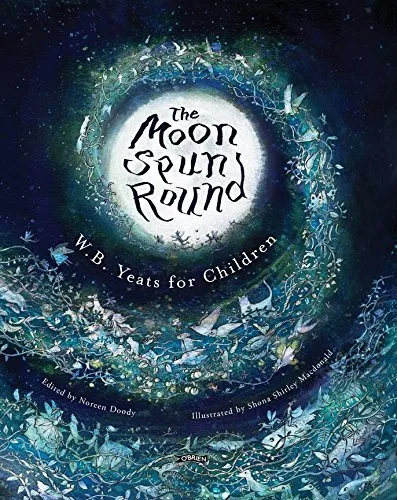"Parnell's Funeral and Other Poems" from "A Full Moon in March"
Manuscript Materials
(Author) W.B. YeatsFrom reviews of The Cornell Yeats series: "For students of Yeats the whole series is bound to become an essential reference source and a stimulus to important critical re-readings of Yeats's major works. In a wider context, the series will also provide an extraordinary and perhaps unique insight into the creative process of a great artist."?Irish Literary Supplement "I consider the Cornell Yeats one of the most important scholarly projects of our time."?A. Walton Litz, Princeton University, coeditor of The Collected Poems of William Carols Williams and Personae: The Shorter Poems of Ezra Pound "The most ambitious of the many important projects in current studies of Yeats and perhaps of modern poetry generally.... The list of both general and series editors, as well as prospective preparers of individual volumes, reads like a Who's Who of Yeats textual studies in North America. Further, the project carries the blessing of Yeats's heirs and bespeaks an ongoing commitment from a major university press.... The series will inevitably engender critical studies based on a more solid footing than those of any other modern poet.... Its volumes will be consulted long after gyres of currently fashionable theory have run on."?Yeats Annual (1983) The manuscripts transcribed and reproduced in this volume of the Cornell Yeats were written from spring 1933 through December 1934. "Parnell's Funeral and Other Poems" is the third section of W. B. Yeats's book A Full Moon in March (1935), following the two plays "A Full Moon in March" and "The King of the Great Clock Tower." David R. Clark's introduction relates biographical events to what the manuscripts show about the chronological order in which the poems were written. The poems, which illuminate such facets of Yeats's life as the poet's flirtations with fascism and Hinduism and his concern, at age sixty-eight, that his poetic powers were waning, are presented in the order in which they appeared in A Full Moon in March. Of the twenty-one poems here, eighteen are called songs. Only "Parnell's Funeral" itself is un-songlike, a somber and powerful declaration made by a Parnellite. Each poem is accompanied by comments on its content and its manuscripts. Ninety-nine illustrations show Yeats's handwritten drafts, typescripts, and revisions. Because of the poems' exotic references, a long section of the introduction provides relevant material from Yeats's letters and commentary and an independent analysis of each poem. Early in his career Yeats, with his fellow poets in the Rymers' Club, had "taken delight in poetry that was, before all else, speech or song, and could hold the attention of a fitting audience like a good play or a good conversation." Throughout "Parnell's Funeral and Other Poems," Yeats's desire for a direct lyrical urge is evident.
W.B. Yeats
W.B. Yeats was an Irish poet, playwright, and one of the most prominent figures of 20th-century literature. Known for his lyrical and mystical poetry, Yeats's works often explored themes of mythology, symbolism, and the occult. Some of his most notable works include "The Tower," "The Wild Swans at Coole," and "The Second Coming."
Yeats played a significant role in the Irish Literary Revival and was a key figure in the development of modernist poetry. His poetic style combined traditional Irish folklore with modernist techniques, creating a unique and influential body of work that continues to inspire generations of poets and writers.
One of Yeats's most famous works is "The Lake Isle of Innisfree," a poem that reflects his deep connection to the Irish landscape and his longing for a simpler way of life. Yeats's contributions to literature, his innovative style, and his enduring influence make him a towering figure in the world of poetry and literature.
